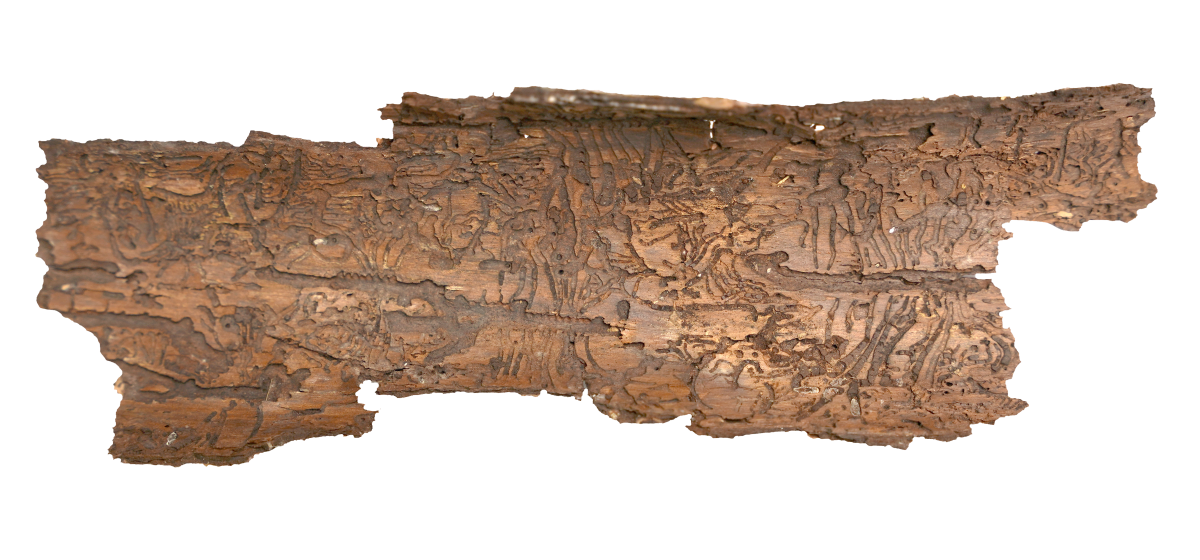The European spruce bark beetle is an inconspicuously looking little creature of about 5 millimeters long. In balanced circumstances, the beetles are the janitors of spruce forests, cleaning up dead wood, clearing sick trees, and maintaining numerous relationships to plants and animals. On the other hand, when numbers explode into an infestation, the species develops itself into one of the main causes of natural disturbances of the woodlands. Due to its disproportionately large impact on ecosystems, it’s considered to be a keystone species.

Many tree species have their own designated bark beetle: it’s a family of 2000. Most bark beetles will only move to weak, dead, or dying trees, but some are quite aggressive and capable of bringing down even healthy hosts if their numbers explode. Thousands of beetles can inhabit one tree.
Bark beetles usually make the life of a tree difficult by digging tunnels between the tree bark and the wood, subsequently cutting off sap supply. Healthy trees can overcome an infestation by encapsulating the affected areas in resin, but weakened trees are doomed. An exception is the Elm bark beetle, which will infect trees by spreading a type of microfungi, causing the incurable Dutch elm disease.
There’s no remedy for a bark beetle outbreak, and an infestation is extremely difficult, if not impossible, to halt.
The beetle’s main tree of choice is the Norway spruce, which is widely planted throughout Europe outside of its native range for economic reasons. Other trees that are prone to the beetle’s visits are local fir, pine and larix varieties, although they function more or less as backups, after Norway spruces have become unavailable.
The beetle lays its eggs two, or even three times a year of conditions are favorable. It digs its way to the inner tree bark, and while moving forward through the wood, strings its eggs in, one after another. Once the larvae hatch, they eat themselves a way outwards, leaving tunnels that grow wider as the well-fed larvae approach the great outdoors.
These tunnel patterns have a remarkable hieroglyphic quality, hence the Latin name: Ips typographus.
In Dutch, the beetle is known as ‘letterzetter’, which means ‘compositor’. Ips leaves an abundance of evidence, after it has settled in trees: its patterns can be found on the insides of pieces of bark, but also on the trunks themselves. There’s an enormous variety in shapes, sizes, and complexity but all have a main tunnel – the ‘mother’ tunnel – from which the other tunnels branch out.
